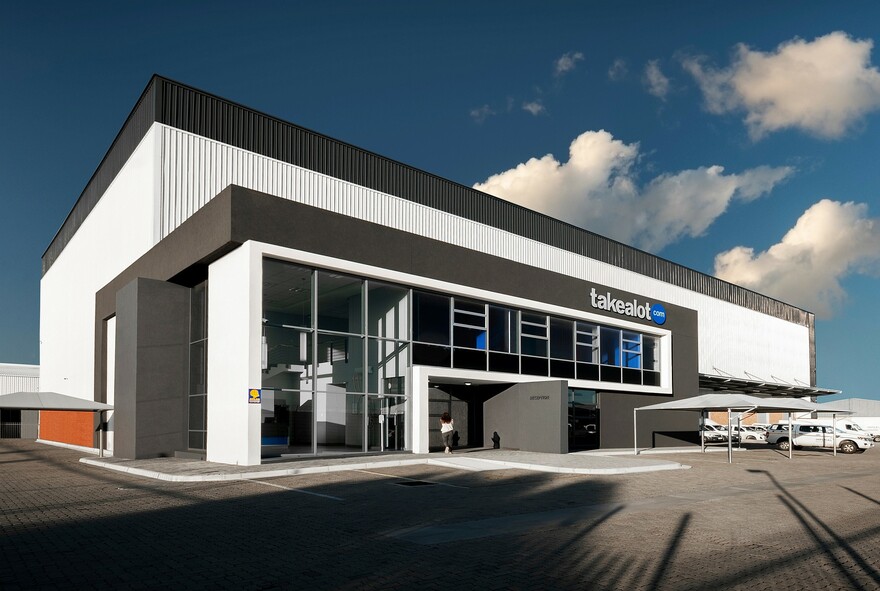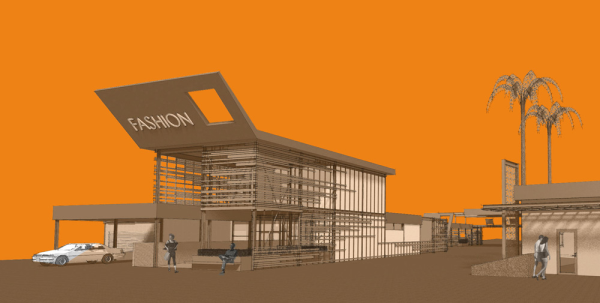Discover the Ingenious Solutions Offered by Commercial Architects for Your Next Project
Commercial architects play a crucial function in shaping the built environment. They mix performance with visual appeal, creating areas that resonate with brand identification. These experts employ cutting-edge style services, lasting practices, and progressed innovations to improve customer experiences. Their collective approach guarantees positioning with customer visions and functional needs. Nevertheless, the extent of their solutions commonly extends beyond style. The following action in recognizing how these architects navigate intricate job needs might surprise you.
Understanding the Role of Commercial Architects
The duty of industrial architects may vary depending on the certain project, their primary feature revolves around designing useful and visually attractive spaces for organizations. These specialists are entrusted with recognizing the special needs of each client, whether it be a store, office complex, or commercial center. They perform detailed site analyses and team up with stakeholders to assure that the layout lines up with the service objectives and brand name identity.Commercial architects also browse numerous governing needs, securing compliance with zoning laws and building regulations. Their proficiency reaches producing sustainable styles that promote power efficiency and ecological responsibility. Furthermore, they handle the job's timeline and budget, coordinating with professionals and designers throughout the building and construction procedure. By mixing creative thinking with technological knowledge, commercial architects play a crucial role in transforming conceptual concepts right into concrete truths, inevitably enhancing the capability and allure of industrial spaces.
Innovative Design Solutions for Unique Areas
As industrial areas significantly require distinctiveness to stand out in open markets, cutting-edge layout services have actually ended up being important for architects. These specialists leverage their imagination and technological knowledge to craft one-of-a-kind atmospheres that mirror brand name identification and enhance customer experience. By integrating sophisticated modern technology and materials, industrial architects can change common spaces right into bewitching places that involve clients and influence employees.Architects employ different strategies, such as adaptive reuse, which rejuvenates existing structures while protecting their historical significance. They additionally discover non-traditional designs and multifunctional spaces that deal with diverse needs, making sure flexibility for future growth.Furthermore, the incorporation of biophilic design-- bringing nature inside your home-- creates inviting ambiences that promote wellness - commercial architects. This focus to detail in cutting-edge design not just addresses aesthetic worries but also fosters neighborhood and partnership. Inevitably, these customized remedies allow services to flourish in an ever-evolving landscape, establishing them besides rivals
Lasting Architecture Practices
Lasting architecture practices have arised as a crucial emphasis for industrial architects seeking to produce impactful designs that resonate with ecological stewardship. These practices focus on making use of eco-friendly sources, power efficiency, and very little waste, mirroring a dedication to reducing the eco-friendly footprint of structures. Architects integrate products that are sustainably sourced or reused, making certain that construction techniques straighten with environmental principles.Furthermore, the combination of environment-friendly roofings and wall surfaces boosts biodiversity while boosting power performance. Effective water administration systems, such as rain harvesting, add to sustainability by preserving water sources. Natural air flow and daylighting strategies are likewise employed to optimize indoor atmospheres, minimizing dependence on artificial heating and lights.
Integrating Technology in Architectural Designs
A boosting variety of business architects are embracing modern technology as a transformative component in building layout. By leveraging advanced software application tools such as Building Info Modeling (BIM), architects can create thorough 3D depictions of jobs, enabling boosted visualization and collaboration among stakeholders. This innovation assists in real-time modifications, lessening errors and enhancing the style process.Additionally, architects are incorporating clever building modern technologies into their styles, which enhance energy effectiveness and owner comfort. Features such as automated illumination, environment control, and safety and security systems can be seamlessly incorporated, promoting sustainable techniques and decreasing functional costs.The use of virtual and enhanced reality additionally permits clients to experience styles prior to building and construction begins, offering important insights right into spatial connections and aesthetic choices. Ultimately, the assimilation of innovation in building designs not just cultivates advancement yet additionally assures that tasks are carried out with precision and straightened with modern demands.

Job Management and Control Solutions
Effective project administration and sychronisation solutions are essential for the successful execution of business architectural tasks. These solutions guarantee that all aspects of a job, from first design to last building, are seamlessly integrated. Commercial architects play a substantial duty in working with between different stakeholders, consisting of clients, service providers, and vendors, to keep clear interaction and alignment on task goals.By carrying out view publisher site structured techniques, architects can manage timelines, budgets, and resources successfully, reducing delays and expense overruns. They make use of job management software program and tools to track development, handle documentation, and assist in collaboration amongst team members.Additionally, these solutions include danger analysis and reduction methods, confirming potential difficulties are recognized and dealt with proactively. The outcome is a structured procedure that enhances overall project effectiveness and top quality, ultimately causing an effective result that fulfills the client's vision and assumptions.
Regulative Conformity and Zoning Assistance
Effective regulative conformity and zoning aid are important for the success of any kind of business job. Architects need to possess a deep understanding of neighborhood laws and zoning legislations to assist clients via the intricacies of the authorization process. This knowledge not just guarantees adherence to lawful needs but also assists enhance task design and functionality.
Navigating Local Laws
How can industrial architects ensure their styles straighten with local laws? By remaining educated regarding the ever-evolving landscape of building codes and neighborhood ordinances, architects play an essential duty in guaranteeing compliance. They conduct detailed study to comprehend the specific guidelines controling materials, safety requirements, and building techniques relevant to each task. Teaming up closely with local authorities, business architects can steer with the complexities of regulatory structures effectively. They additionally assist in necessary permits and examinations, streamlining the approval procedure. This positive approach not just reduces potential lawful difficulties but additionally boosts job efficiency. Inevitably, their know-how in steering regional policies encourages customers to realize their vision while adhering to all needed standards and standards.
Zoning Law Knowledge
Zoning legislation know-how is essential for industrial architects steering via the intricacies of land use regulations. These architects possess comprehensive expertise of neighborhood zoning codes, which regulate residential or commercial property advancement, land usage, and structure specifications. By recognizing these guidelines, they help customers navigate the frequently detailed authorization procedures needed for building jobs. Their knowledge assurances conformity with zoning laws, lessening the threat of project hold-ups or legal complications.Additionally, industrial architects provide valuable help in getting essential permits and variances, promoting smoother interactions with local authorities. They likewise supply calculated referrals to optimize site layout and maximize the potential of a residential or commercial property while adhering to zoning restrictions. Ultimately, their zoning legislation effectiveness plays a critical function in the effective understanding of commercial tasks.
Collective Strategies With Customers and Stakeholders
Successful industrial architecture rests on the ability to foster strong partnership with customers and stakeholders throughout the layout procedure - commercial architects. Architects engage in open discussions, guaranteeing that all events' visions and needs are incorporated into the task. This collaborative technique begins in the preliminary stages, where architects conduct workshops and article conceptualizing sessions, permitting clients to articulate their goals and concerns.Stakeholder input is just as crucial; architects typically arrange meetings with neighborhood members, regional federal governments, and various other pertinent entities to collect varied perspectives. By employing visualization tools, such as 3D modeling, architects facilitate far better understanding and communication.This repetitive comments process not just enhances style high quality however additionally builds count on, causing more successful outcomes. Eventually, the collaborative viewpoint of industrial architects changes ideas into useful spaces that show the desires of clients and the broader area, making certain a harmonious relationship throughout the job lifecycle

Often Asked Questions
What Is the Common Timeline for an Industrial Design Job?
The common timeline for an industrial architecture project differs, usually extending 6 to 18 months. Variables affecting this duration include project complexity, governing authorizations, and customer responsiveness, affecting each phase from style to building conclusion.
Exactly How Do Commercial Architects Cost for Their Solutions?
Commercial architects generally bill based on job scope, intricacy, and dimension. Typical cost structures consist of per hour rates, taken care of fees, or percentage-based charges computed from the total building and construction price, making sure transparency and positioning with customer expectations.
Can Commercial Architects Help With Interior Decoration?
Commercial architects can without a doubt help with interior decoration, integrating capability and aesthetic appeals. Their competence warranties cohesive spaces that line up with building vision, enhancing user experience while satisfying governing requirements and client goals via innovative style remedies.
What Sorts of Clients Do Commercial Architects Normally Collaborate With?
Commercial architects usually work together with varied clients, consisting of businesses, government entities, schools, and charitable companies (commercial architects). Each customer looks for customized building solutions to meet particular functional and aesthetic demands for their jobs and atmospheres
How Do Commercial Architects Keep Updated With Layout Fads?
Commercial architects remain upgraded with layout patterns with constant education, going to industry conferences, involving in specialist networks, and researching emerging technologies. They also team up with various other experts to acquire insights right into Visit Website ingenious materials and design techniques.